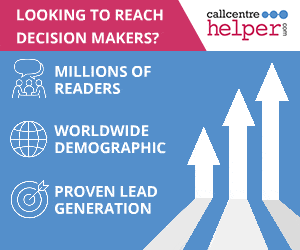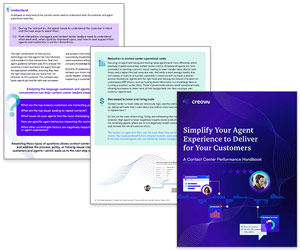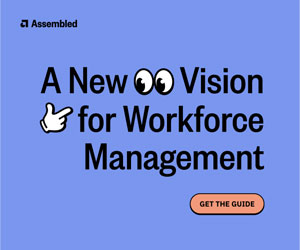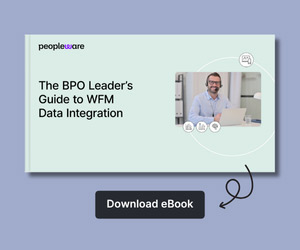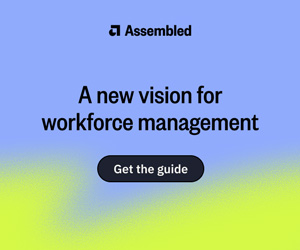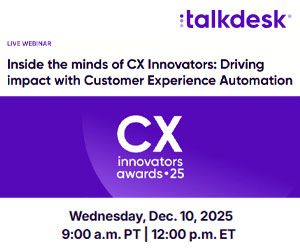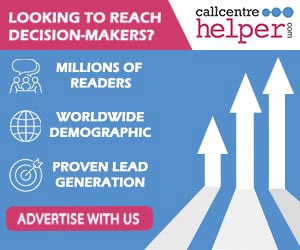It’s no secret that contact centres are high-pressured, fast-moving working environments that are a challenge to run smoothly. Yet, so often, it’s “the straw that breaks the camel’s back” that really throws an operation off course.
So, what are these (seemingly) little things that are most important to get right? To find out, we asked our reader panel for their personal experiences of what can really “make or break” the success of any contact centre.
Employee Engagement
How Much a Mission Statement Really Resonates With Your Teams

In my experience, giving staff something to buy into – whether it’s an initiative, shared objectives, or a mission statement that really resonates with them – is a great way to build higher levels of trust and engagement, which automatically breeds higher performance.
Back in my days as a team leader, one of my most successful teams was built around a collaboratively created identity.
This allowed us to better focus on tasks and have fun – as interacting with each other around that theme (and using that as motivation) lifted morale and really brought out the personalities of the group.
Contributed by: John Pearson, Contact Centre Manager at Citizens Advice Gateshead
A customer service vision statement also provides meaning and direction for employees. For advice on creating one, read our article: Getting Started With Customer Service Mantras and Vision Statements
How Often You Include Agents in Pilots of New Systems and Processes

Engagement, engagement, engagement! For me, the voice of our agents is of the utmost importance.
They are on the front line. They are the ones likely to experience an issue with any new software, process, call centre policy, etc. So, the great call centres out there are those that engage with those agents!
This can be achieved in a variety of ways. Everything from senior leaders holding mini forums, to messaging out to ask for issues, to having a suggestion board, to MBWA (managing by walkabout), to running pilot groups around new processes before going live, to getting agents in to test the new system first.
Engaging the front line, getting feedback and asking the agents what their pinch points are is crucial! However, it’s not just about listening, but about acting on their insights and fixing those issues for our front line – as this shows that we are all in it together and ensures continuous collaboration.
Contributed by: Paul Gardner, Resource Planning Manager at Haier Europe
How Committed You Are to Creating Time for Meaningful Development

The importance of correct forecasting and rostering cannot be overstated. When staffing levels are right, you can actually schedule one-to-ones, quality sessions, and team meetings – without hurting performance.
Off-the-phone time and training are invaluable. It’s when agents get feedback, performance lifts, and there’s space to create meaningful development that we see as an uplift in team engagement.
You also get more opportunities to check in with your agents. This time is gold – as it helps you understand what’s going on in their world, their challenges, and just get to know them better. All of which feeds into a strong, connected team culture.
Contributed by: Kirstyn Minogue, Customer Service Centre Manager at Black & White Cabs
For practical methods leaders can use to keep on top of training in a short-staffed contact centre, read our article: How to Keep on Top of Training in a Short-Staffed Contact Centre
How Many Wellbeing Initiatives You Put in Place (to Counter Stress and Burnout)

Prioritizing wellbeing leads to better performance, improved retention, and a more positive workplace culture.
At Specsavers, we’ve introduced several measures that have made a huge difference to our people, including having Wellbeing Advocates who spotlight national and international topics – through engaging focus days on Men’s Health Week, World Mental Health Day, and more.
Their monthly Find Your Calm podcast even features guest speakers sharing personal wellbeing strategies.
We’ve also introduced a welcome-back session for people returning from long-term sick and annual leave. This is planned at the start of their first shift back, so they can catch up on anything they may have missed while they were away.
Not only that, but we’ve also introduced a ‘time-out’ code that agents can use to take a breather following a difficult call.
Contributed by: Emma Wilson, Operations Manager – Optics at Specsavers
Did you know? Our 2025 What Contact Centres Are Doing Right Now report revealed that many contact centres are rising to the challenge of providing a broad wellbeing offering to their frontline teams. Yet a fifth are still doing nothing!
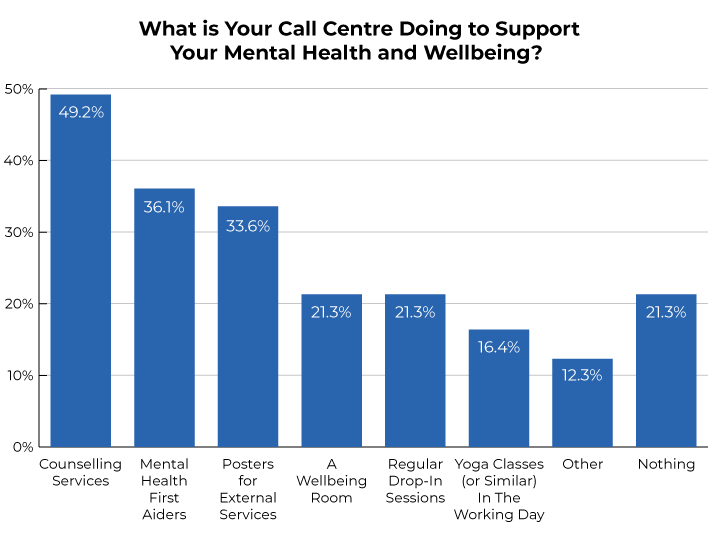
How Often You Check In With Agents and Celebrate the Small Wins

It’s not the flashy technology or sophisticated metrics that make the difference, it’s whether your people actually want to be there!
The challenge lies in maintaining engagement when agents face repetitive queries, demanding targets, and often difficult customers.
Yet the smallest gestures yield remarkable results: a supervisor’s daily check-in, peer recognition schemes, or simply celebrating small wins publicly. These cost virtually nothing but transform workplace culture.
What’s particularly telling is how engagement affects problem resolution. Motivated agents naturally probe deeper, ask clarifying questions, and persist until they’ve truly helped.
They become brand ambassadors rather than order-takers. Meanwhile, disengaged staff do the bare minimum, creating repeat calls and escalations that damage both metrics and customer relationships.
Contributed by: Jose Luiz De Oliveira Neto, Manager at Accenture
How Much Your Agents Are Directly Involved in Shaping the Events Roadmap

When agents feel recognized, involved, and inspired, their performance and engagement naturally follow suit.
One initiative I introduced that had a significant impact was a year-long ‘Events Roadmap’ – a visual and collaborative plan that showcased upcoming fun, wellbeing, and engagement activities across the contact centre.
What made this initiative particularly powerful was that it wasn’t just driven by the management team, agents were directly involved in shaping the roadmap, and one of their peers took on a key role in supporting its delivery.
This approach created a sense of ownership and excitement, helping to embed motivation across all teams. It also gave agents a voice and visibility into what was coming, which helped build anticipation and a stronger sense of community.
Contributed by: Danny Green, Training & Development Business Partner at Anglian Water Services
Resource Planning
How Well Aligned Your WFM Strategy Is – From Top to Bottom

Top to bottom alignment for WFM is key!
Without all levels understanding that the organization is committed to WFM, and also what each area is getting out of its use, efficacy wanes. I have been in organizations where the top is committed, but the bottom isn’t properly engaged, so adoption is flawed.
I’ve also been in others where the bottom is bought-in, but the top is not committed financially, so functionality is stunted from the beginning – without the proper tools or teams to support.
Contributed by: Aric Roberts, Senior Manager, Enterprise Capacity Planning at ThermoFisher Scientific
There are other habits that could be killing your WFM strategy. To find out, read our article: Bad Habits That Kill Resource Planning
How Many Holiday Requests You Actually Say “Yes” To
Without question, this would have to be the change we introduced to the holiday booking process in our contact centre. Some would consider this a change on quite a large scale, but the change in process was actually very simple.
Historically, prior to the change, we had a ‘fastest finger first’ on a single leave release day approach for colleagues being able to book holiday, and if you got it, great!
If not, you would need to book alternative dates or join a waiting list. Through engagement with colleagues and gaining more understanding of the impact this was having on our people, we realized the need to make a change.
This led to the introduction of our ‘Holiday Guarantee’ process and the planning function taking full responsibility for the challenges this might present – with peaks of leave and potential service impacts, etc.
This process enabled colleagues to book their holidays within a 6-week window and, in doing so, we would guarantee the approval of these requests (with a small number of conditions built in).
In year 1 of the change, we released and guaranteed the booking of 80% of colleagues’ leave to give us a little flexibility and time to understand the true impact.
By year 2, we went straight to 100% of leave allowance release – with confidence that we could mitigate any risk days the process might give us.
The positive impact this had on colleagues’ wellbeing and engagement was immense – with lots of positive feedback coming to the planning team as a result. Additionally, we saw improvements in attrition as well as using it in our adverts to attract new staff.
Contributed by: Chris Wiles, Resource Planning Manager at Yorkshire Water
How Fiercely You Protect the Long-Term Health of Your Operation

A strong contact centre builds resilience into its capacity plan. By recognizing that no forecast is ever perfect and including a buffer in recruitment and staffing models, you can account for residual noise or those unexpected fluctuations in demand that can’t be precisely predicted.
Without that buffer, even minor surges in volume can strain service levels and morale.
Equally important is how you manage occupancy. Setting a hard cap on occupancy ensures agents aren’t scheduled to be constantly busy and helps prevent burnout and attrition.
After all, an agent who’s always at maximum capacity can’t give their best, which can have a negative impact on customer experience.
While metrics like cost-per-contact are important, long-term health comes from proactive planning that anticipates the unexpected and respects agent wellbeing, leading to a more effective and sustainable operation.
Contributed by: Stephen Banim, Lead Workforce Management Analyst at Indeed
Communication
How Well Everyone Understands What “Good” Looks Like
Clear expectations set the tone for the team’s performance.
Small, consistent reminders about service strategy and standards, tone of voice, and escalation processes all help maintain alignment. It’s not enough to have policies in place, they need to be communicated regularly, in bitesize chunks, so agents know exactly what “good” looks like and what is expected of them.
In our experience, when contact centres focus on these small but consistent communication habits, the results compound over time. Customers feel heard and valued, and teams operate with clarity and confidence.
Contributed by: Sadie Wallis, Sales, Retention & Service Centre Manager at Simplyhealth
How Quickly You Can Tackle the Issue at Hand

In a contact centre, clear communication and empathy can make or break success.
That’s why we do extensive training on how our staff speak to the service user, the clear messages they give and ensuring that they’re looking out for things like vulnerabilities or neurodivergent conditions, so they can tailor their response when speaking.
We also recognize that our agents may potentially have neurodivergent conditions themselves, so we make sure that the training they do is tailored to meet their needs, and that the systems that we implement are easy to use.
We work with our agents to support the service user with empathy. We’re not heavy-handed, we’re here to guide them through the process and make the debt resolution process as easy as possible.
The quicker we tackle the issue at hand, the quicker we can deal with the situation and therefore take the stress out of debt. Encouraging early engagement means that we can bring about a resolution at the earliest opportunity rather than it becoming more strained over time.
Contributed by: Vicky Felton, Director of Operations at DCBL
How Closely You Involve Agents in Decisions Around Recruitment and Shift-Pattern Changes

I firmly believe in including colleagues in every major decision, project, or system change that may have an effect on them and their role.
Establishing a People Board is a great way to encourage involvement and provide a platform where both work-related and social topics can be discussed and agreed.
If possible, provide the board with a budget, however small, for activities and events. Give them a mandate and empower them to make decisions within defined boundaries.
I would also involve colleagues in recruiting to roles at their level. Using frontline staff as part of an interview or assessment process has benefits both for applicants and employees.
Applicants can chat to people currently doing the role they’re applying for to help them decide whether it’s for them, whilst employees get a say in the future make-up of their team.
Even if you’re considering shift-pattern changes that you think may prove unpopular, ask your people! In today’s gig economy with hybrid working, shifts that were unpopular in the past (evenings, weekends) have often become appealing to employees trying to fit work around their personal life.
Contributed by: Paul Allen, Head of Customer Support at Department for Education
Changing shift patterns can also be stressful. For advice on managing this, read our article: How to Change Your Shift Patterns – Without Losing Your Best Agents!
How Open and Honest You Are (With Agents and Customers Alike)

We’ve seen firsthand that when you communicate with regularity and with honesty, the feedback is positive – and that positivity is then filtered through to the customers.
This may seem minor compared to strategic operational changes, but without this consistent and clear communication, both staff and customers can feel in the dark and frustrated.
Customers want to know you understand them, their history, their preferences, and why they are contacting you, so they don’t have to start at the beginning again.
This small but very important detail reduces repetition, builds trust, and directly improves customer satisfaction and experience.
Contributed by: Paul Cuglietta, Head of Contact, Claims & Operations at Simplyhealth
How Regularly You Communicate About Upcoming Risks and Opportunities

I’ve found that brief 15-minute buzz sessions, also known as huddles, significantly benefit advisors’ engagement and productivity. Holding these short catch-ups two or three times a week ensures the team is clear on current performance.
It also ensures that important messages regarding processes or customers are communicated directly, and the team can anticipate and be aware of upcoming hotspots, risks, and opportunities over the next few days.
This awareness keeps them engaged and enables them to provide direct feedback to their line manager. These sessions are great for team morale and overall communication too, fostering a stronger connection between line managers and team members.
Contributed by: Danny Gunn, Head of Workforce Planning at bet365.com
How You Give Feedback to Your Agents

Feedback might seem like a small thing, but when it’s given consistently and with care, it changes everything – culture, confidence, performance, growth, and retention. It’s not just good practice. It’s good leadership!
When you step into leadership, someone usually tells you, “Make sure to give feedback”. Cool. But no one really shows you how to do that or even explains why it matters.
From what I’ve seen, it doesn’t have to be deep or complicated. Sometimes it’s just a quick message, something like “Hey, nice work on that client request!” or “Next time, maybe try this instead?”
Whether it’s on Slack, Teams, or whatever your team uses, it’s not about the tool, it’s about the moment!
And those small moments? They go a long way! When someone feels like their work was noticed, it can totally change the tone of their day. It builds trust. It gives people a boost. It creates momentum. People feel seen, and that feeling matters more than we often realize.
Contributed by: Arlyne Pardo, Senior Workforce Manager at DASH BPO
For advice on improving how you give feedback, read our article: How to Provide Closed-Loop Feedback With Employees and Customers
How Firmly Embedded Your Goals Are Into Daily Conversations and Decision-Making

For me, success starts with making sure everyone clearly understands what we’re trying to achieve! It sounds simple, but it’s easy to assume that if leadership is aligned, then the rest of the team naturally follows. But that assumption can quietly derail progress.
When goals aren’t consistently communicated, people make their own interpretations and that leads to confusion, scattered focus, and misaligned priorities.
Clarity isn’t just about stating a goal once at the start of the year, it’s about embedding it into daily conversations, team rituals, and decision-making.
We have to be clear to be kind. When everyone knows where we’re going and why, they feel ownership and confidence in their role.
Contributed by: Deborah Woods, Contact Centre Manager at Costa Coffee
How You Communicate “the Small Stuff” (Because It’s Just as Important as “the Big Stuff”)

Communication is key! Whether that is communicating process change, customer service or general day-to-day site-specific messages, it all matters to ensure that people are clear on what is happening.
There’s nothing worse than feeling that you’re out of the loop, especially when you want to deliver the absolute best in customer experience.
At Ocado Retail, we have a communication platform called Beehive that keeps people up to date on what is important to them (big and small!) – maybe the vending machine is getting serviced, maybe we have our CEO visiting the Hub, or maybe there are marketing comms that have been sent to customers that they might want to talk to us about.
Whatever it is, we want people to know! After all, good communication drives engagement, bad communication drives attrition.
Contributed by: Sarah Graham, Senior People Development and Training Manager at Ocado Retail
To find out what the secrets of effective communication are and how to apply them in your contact centre, read our article: The 7 Cs of Effective Communication
What Do You Think “Makes or Breaks” a Contact Centre?
Click here to join our NEW Readers Panel to share your experiences and feature in future Call Centre Helper articles.
If you are looking for more advice to improve your contact centre, read these articles next:
- What It Really Takes to Run a Sustainable Contact Centre
- How to Foster Strong Relationships Across Multiple Sites
- How to Write a Standard Operating Procedure (SOP)
Author: Megan Jones
Reviewed by: Xander Freeman
Published On: 8th Oct 2025 - Last modified: 15th Oct 2025
Read more about - Call Centre Management, Aric Roberts, Arlyne Pardo, Communication Skills, Danny Green, Danny Gunn, Deborah Woods, Editor's Picks, Emma Wilson, Employee Engagement, John Pearson, Jose Luiz, Kirstyn Minogue, Leadership, Management Strategies, Paul Allen, Paul Cuglietta, Paul Gardner, Sarah Graham, Stephen Banim, Team Management, Top Story, Vicky Felton, Workforce Management (WFM), Workforce Planning




